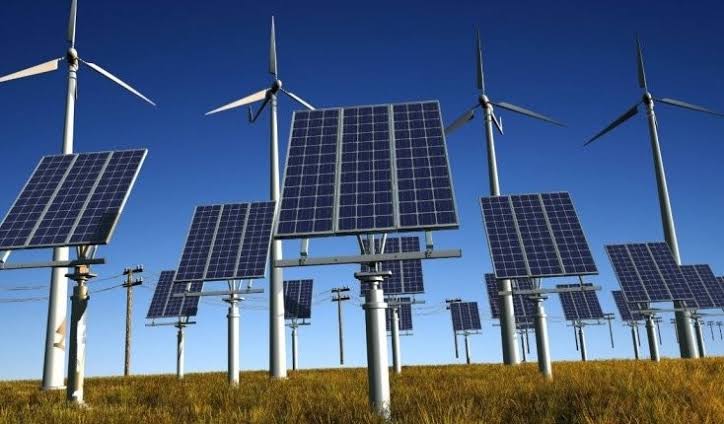Before now, I always wondered the fad about climate change. For the longest period, it was hard to see how Africa’s minimal contribution to the global emission mix may have had any significant impact. All together, I usually dismissed the global warming talk as some misplaced outrage by the international community when there were more urgent issues of poverty, hunger, malnutrition, out-of-school children, communicable diseases, among other global economic challenges that pose an almost similar or even greater threat. But I was wrong.
One of the earliest concepts I learned in economics is the idea of externalities, which explains the interdependence of human activities and how the economic decisions of one person or group can create costs or benefits for people other than the decision-maker(s). This explains why, although Africa might contribute only about 4 percent of the global carbon emissions, the continent is not insulated from the impact of the climate crisis and may suffer the worst form of devastation from the climate challenge.
Already, it has been established that emissions and waste must be limited to the extent that the Earth can absorb. At the moment, we are producing a staggering 20 percent more emissions than the environment can safely absorb. It was for this reason that at the Paris Climate Conference in 2015, most countries in the world agreed to keep the global average temperature below 2°C and achieve net-zero greenhouse gas emissions by 2050.
Nigeria currently accounts for the 4th largest emissions in Africa, after South Africa, Egypt, and Algeria. Despite Nigeria’s marginal contribution to the global emission mix, the country has not been insulated from the impact of climate change. According to the United Nations, in 2022 alone, flooding killed at least 662 people, injured 3,174, displaced about 2.5 million people, and destroyed 200,000 houses in Nigeria.
Advertisement
Nigeria’s carbon emissions come from electricity generation, mining, oil exploration, manufacturing, transport, and marginally from households. The use of generators as an alternative source of fuel has made the situation even more dire. The desertification in the north, flooding, erosion, and other extreme environmental events in the south reinforce the already-known fact that the climate crisis is a present and imminent danger. To address the challenge, Nigeria must immediately commit to urgent climate action that is backed by resolute ideas, political will, and citizen effort.
At the center of every sustainable transformation is the effective deployment of renewable energy sources. For example, Feldheim, a German village southwest of Berlin, has harnessed its wind potential to become energy-sufficient. Samso Island, Denmark, is another example of a region that has successfully harnessed its offshore wind potential.
Similarly, countries like Sweden, Iceland, Norway, Finland, New Zealand, the United Kingdom, and Costa Rica are examples of countries that have transformed their renewable energy potential. A few African examples also abound; Kenya and Morocco readily come to mind. For example, Kenya successfully implemented the 310 MW Lake Turkana Wind Power Project, which is currently Africa’s largest wind farm, enough to supply energy to one million homes. In Morocco, the Noor-Quarzazate complex is the world’s biggest solar farm, generating 580 MW of electricity.
Advertisement
In all the leading examples I have seen, Germany possibly offers a compelling model that I think most countries, including Nigeria, can adopt. The country has successfully integrated its solar, wind, and bio-energy sources to produce over 69 percent of the total energy required. By 2050, the country is looking to not only cut emissions but also reduce energy consumption. Its energy transition plan involves significant investment in smart grids, energy storage, and energy efficiency.
Like Germany, Nigeria must immediately work to harness, optimise and integrate its renewable energy potential—the abundance of hydro, sun, and wind— provide incredible opportunities for energy transition and to meet its net zero target. Policy instruments, including taxes, subsidies, permits, and emission trading, must also be deployed as either incentives or disincentives. For example, the carbon tax is a policy tool that has already been deployed in several countries, including Denmark, Finland, and Sweden. While the tax is charged on fossil consumption, it has been effective because of its redistributive value to the lowest income bracket, hence being described as revenue neutral.
Other market-based policy instruments, including emission trading, which involves the setting of an emission cap, and green subsidies, which, unlike carbon taxes, serve as incentives, are also vital policy tools for getting Nigeria on the path to a clean energy future. There is also a need to invest in an effective public transport system to reduce the number of cars on the road and, by implication, the amount of emissions. However, more than policy and government action, there is a need for national consensus that would inspire citizen effort and private sector-led intervention.
Climate action has become a global emergency, and Nigeria cannot afford to be left behind. If we must guarantee a clean and sustainable future, Nigeria must immediately harness its renewable energy potential and introduce enabling policy instruments. There is no other way.
Advertisement
Awogbenle, a Development and Public Policy Professional, writes from the United Kingdom. He can be reached via seunawogbenle@gmail.com.
Views expressed by contributors are strictly personal and not of TheCable.
Add a comment







